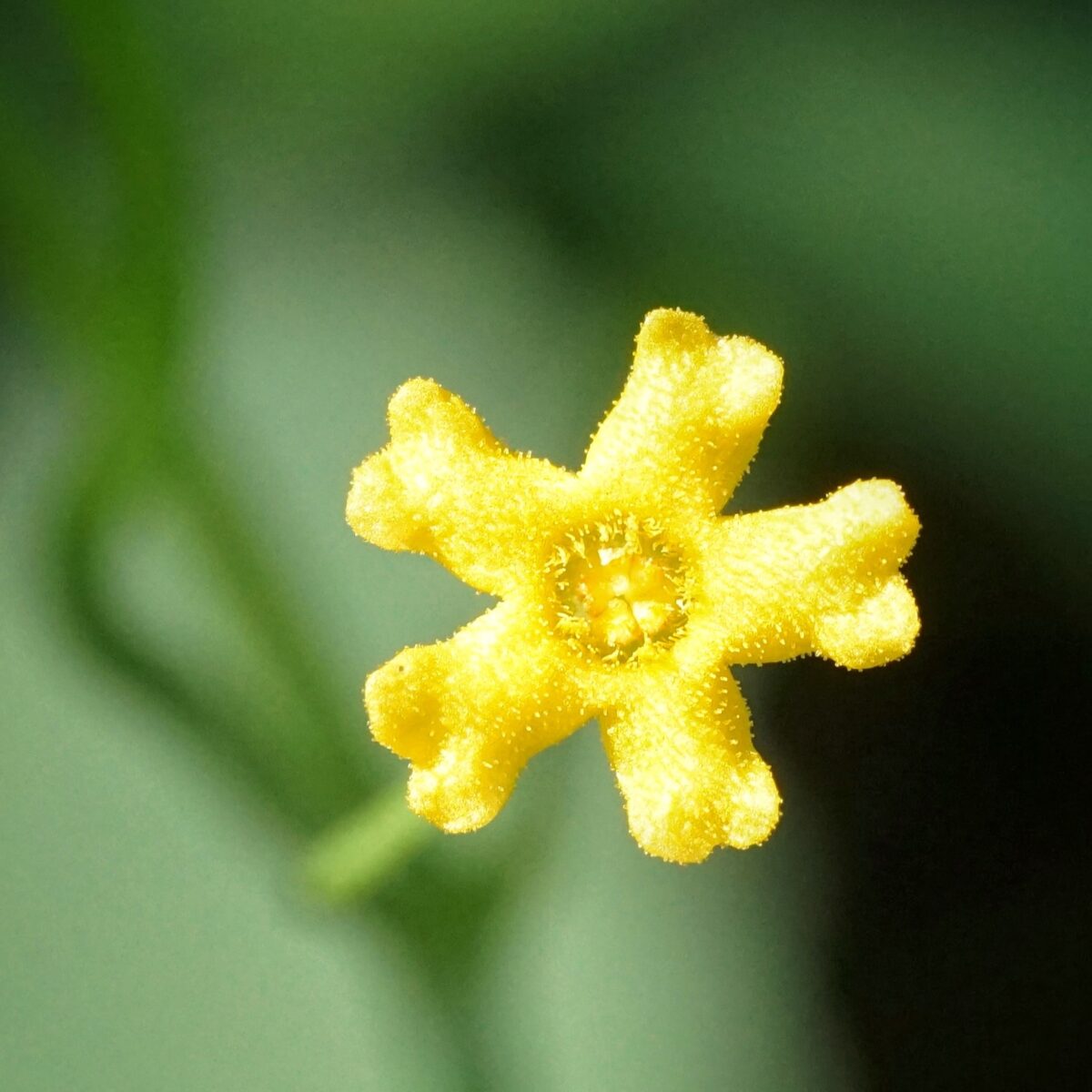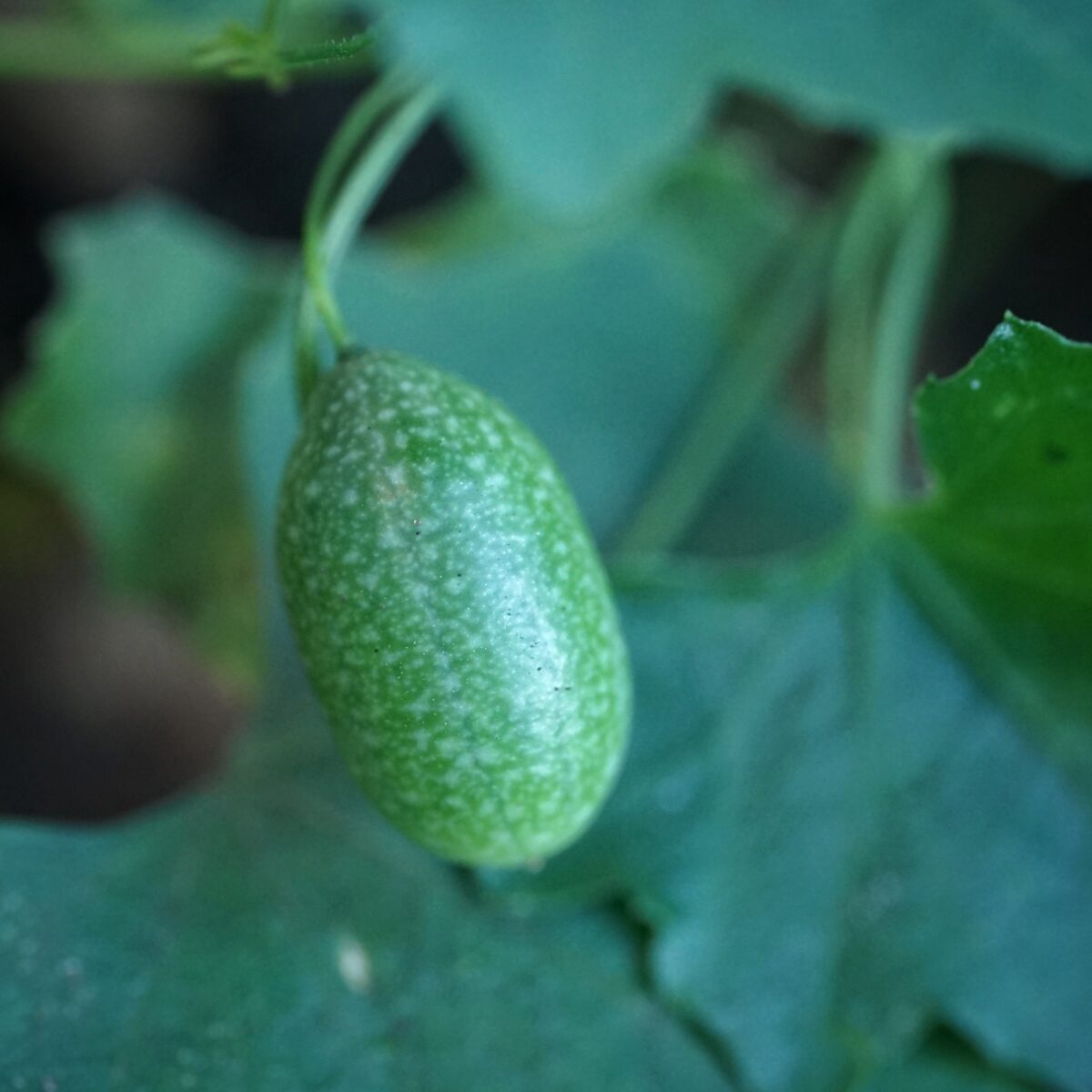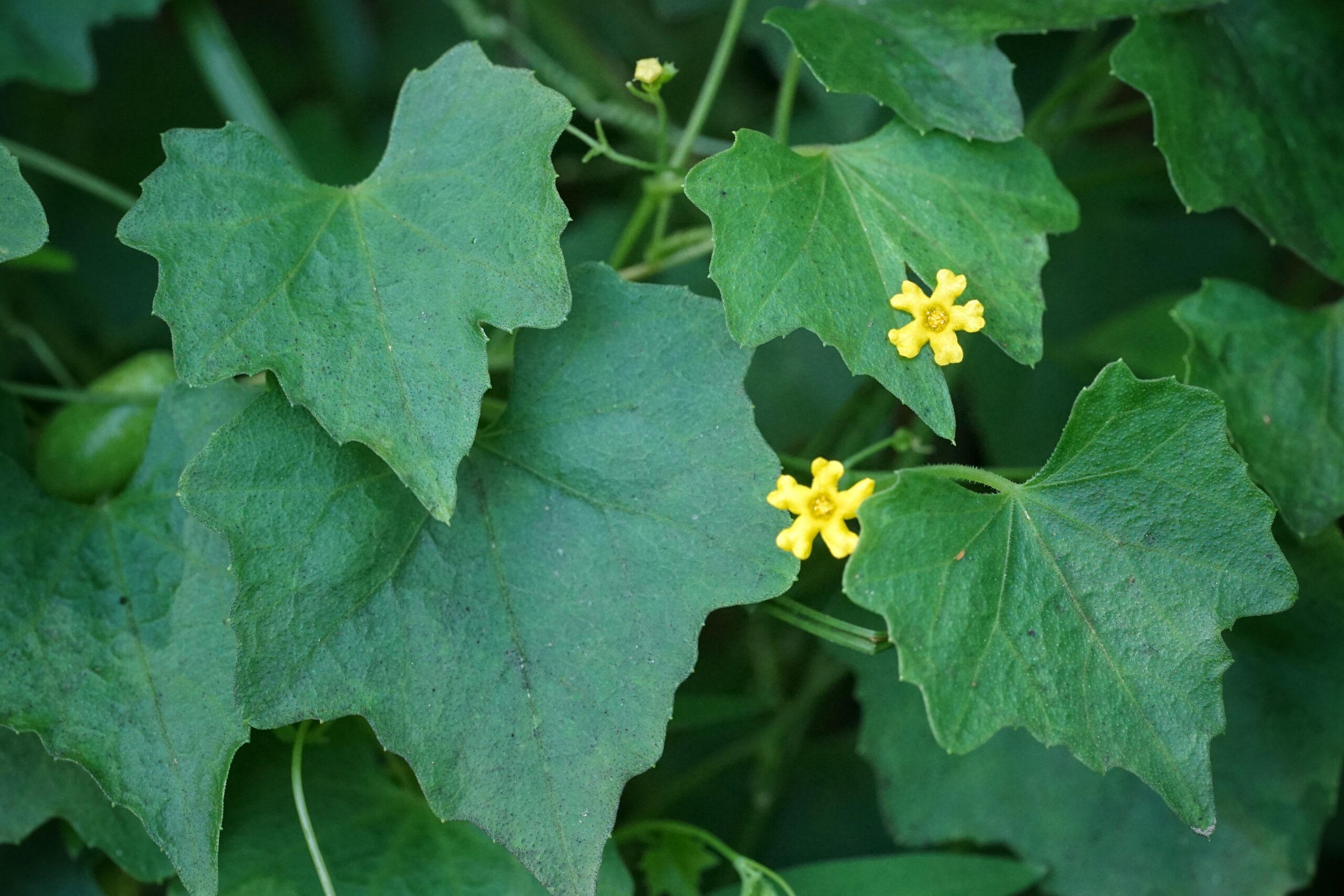Creeping cucumber
Pictured above: Creeping cucumber (Melothria pendula) by Emily Bell. Click on terms for botanical definitions. View post as a PDF.
We don’t often attribute the adjective cute to plants, but in the case of Creeping cucumber (Melothria pendula), it fits! This delicate vine creeps and can create mats along the forest floor and will also climb into nearby shrubs and trees. Blooming in summer through fall, it produces miniature flowers and fruits that are, well, just adorable.
Thin green stems bear alternate leaves that are 3- to 5-lobed; the depth of the lobing can be quite variable. The leaf shape and size resemble that of English ivy. The bright flowers are tiny, ¼ inch across or smaller, have 5 petals, and are held on long pedicels. Pollinated flowers become small light green fruits often with lighter or white mottling that makes them look like miniscule watermelons. As they ripen, they darken and eventually turn black. The species epithet pendula refers to how the fruits dangle at the end of their pedicels like a pendulum.


While there has been some debate about the edibility of this plant, there seems to be general agreement that the light green fruits are not only edible but have a very nice light cucumber taste and are a great addition to salads. However, as the fruits become dark green to black, they become less tasty and may cause gastrointestinal distress.
Family: Cucurbitaceae (Cucurbits or Gourd family)
Native range: Throughout Florida
To see where natural populations of Creeping cucumber have been vouchered, visit florida.plantatlas.usf.edu
Hardiness: Zones 8A–11B
Lifespan: Perennial
Soil: Moist sandy soils
Exposure: Part sun to full shade
Growth habit: Vine
Propagation: Seed, cuttings
Garden tips: While not widely cultivated, Creeping cucumber may volunteer itself in home landscapes and can be grown from seed or cuttings. Although often treated as a weed, it can provide a nice groundcover in shady areas and the flowers attract a variety of pollinators.
Creeping cucumber plants are not commercially available. Visit a natural area to see them.
Learn more about about Creeping cucumber from The Institute of Regional Conservation.

